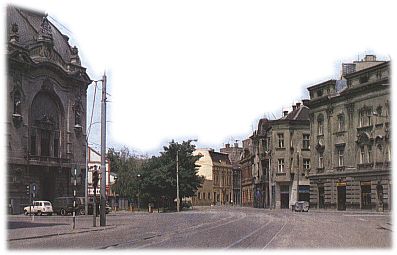 Received its present name in 1906. Previously divided into several streets: Savska (the part from Kalemegdan to Crnogorska Street, 1872 - 1906), Moravska (from Kraljevića Marka Street to Brotherhood and Unity Square, 1896 - 1906), and Majdanska (from Crnogorska to Kraljevića Marka Street, 1872 - 1906).
He had spent his youth resisting Turkish violence, first as an outlaw and later as a brave fighter in the volunteer company (Frei Korps) of Captain Radić Petrović in the Austro-Turkish war of 1788-1791. when the janissaries returned to Belgrade, Karađorđe became an outlaw and, together with various prominent Serbs, began to prepare a stronger resistance movement. He managed to evade the shameful action by the Turks when they cut off the heads of 72 Serbian chiefs, and, at the beginning of February 1804, was chosen as leader of the uprising at a meeting in Orašac. It was his crucial influence which transformed the rebellion against the Turkish dahis into a war of independence. He linked the newly-risen Serbia with both Austria and Russia, and joined battle with the Turkish Sultan when the latter's guarantees proved insufficient. At the height of the uprising, he led the famous battle at Mišar and the battles for the liberation of Belgrade in 1806. However, the uprising brought to the fore other leaders who challenged his authority. This brought into question the integrity of the revolution and Karađorđe's principle of a firmly united new Serbian state. When the uprising col- lapsed in 1813, he went first to Austria and then to Russia, but returned to Serbia in June 1817. At dawn on 13 July that year, Karadjordje was murdered on the orders of Prince Miloš Obrenović and his head was cut off and sent to the Sultan.
Karađorđe was a great leader and a wise statesman, politician and
revolutionary of broad views. He was rational and had a clear vision of
the future, and was much more sensible than some of his Serbian contemporaries.


Albania Palace Building | The Bajrakli Mosque | Belgrade Palace Building | Belgrade Railway Station | Captain Miša's Building | Cvijeta Zuzorić Art Pavilion | Karađorđeva Street | Knez Mihailova Street | Princess Ljubica's Residence | Millenary Monunemt on Gardoš Hill | Price Miloš's Residence | The National Theatre | Nemanjina Street | Nikola Pašic Square | Republic Square | Skadarlija | Slavija Square | Student Square | The Trade Union Hall | Terazije Square | The '?' Cafe Restaurant | Article about the architecture and building in Belgrade |